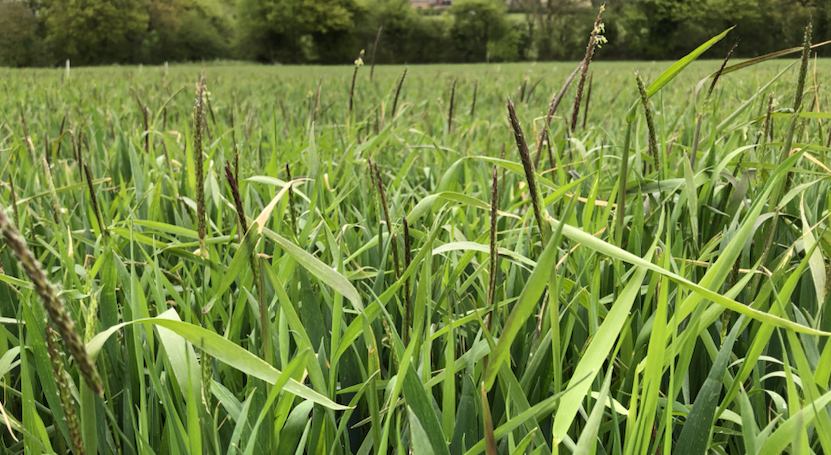Check weeds ahead of harvest
29th June 2020
After a challenging season for arable farmers, the window before harvest is an opportunity to check and map the black-grass situation to plan for the months ahead.
After a challenging season for arable farmers, the window before harvest is an opportunity to check and map the black-grass situation to plan for the months ahead. Bayer’s Darren Adkins shares his thoughts on what farmers can be doing right now to manage black-grass and other grass weeds.
Check weed levels
Walking the crop to assess black-grass levels is an important step to plan cultivation and cropping. Identify fields with high weed pressure for late-drilling or even spring cropping. Some farmers might be keen to drill wheat earlier this autumn after the deluge last year. Anyone doing this needs to target low black-grass pressure fields.
Identify the reason for poor black-grass control
Compaction or bad drainage are often the cause of bad black-grass and poor crop establishment. Investigate any problem areas with inspection pits to decide what needs to be done. Take a targeted approach to any deep cultivation; unnecessary cultivation is costly and mixes the weed seedbank throughout the soil profile.
Resistance tests
If weed control from herbicides is lower than expected, it might be worth taking a resistance test. Black-grass, rye-grass and brome all have instances of resistance to post-emergence chemistry. There have also been a small number of cases of resistance to pre-emergence chemistry in rye-grass. Use the results to plan future herbicide and cultural control programmes. In general, more cultural control measures and alternating or stacking modes of herbicide action help manage resistance.
Don’t collect seed too early for a resistance test
For a resistance test, weed scientists need a good quantity of viable seed. The most common problem is collecting immature seed by stripping form the head rather than mature seed which you can brush off gently. For a black-grass resistance test, at least a half-pint glass full is needed to ensure good results. Also, make sure it is fully dry and store in a paper bag or envelope as moisture may cause the sample to rot in transit.
Think about harvest hygiene
Moving black-grass around the farm on harvest equipment can turn a small problem into a much bigger one. Combine weed patches last so that seed isn’t spread between clean parts of the field. Blowing down the combine between fields is also beneficial. Slowing down harvest work is never an easy decision, so build the hygiene element into planning rather than as an afterthought.

